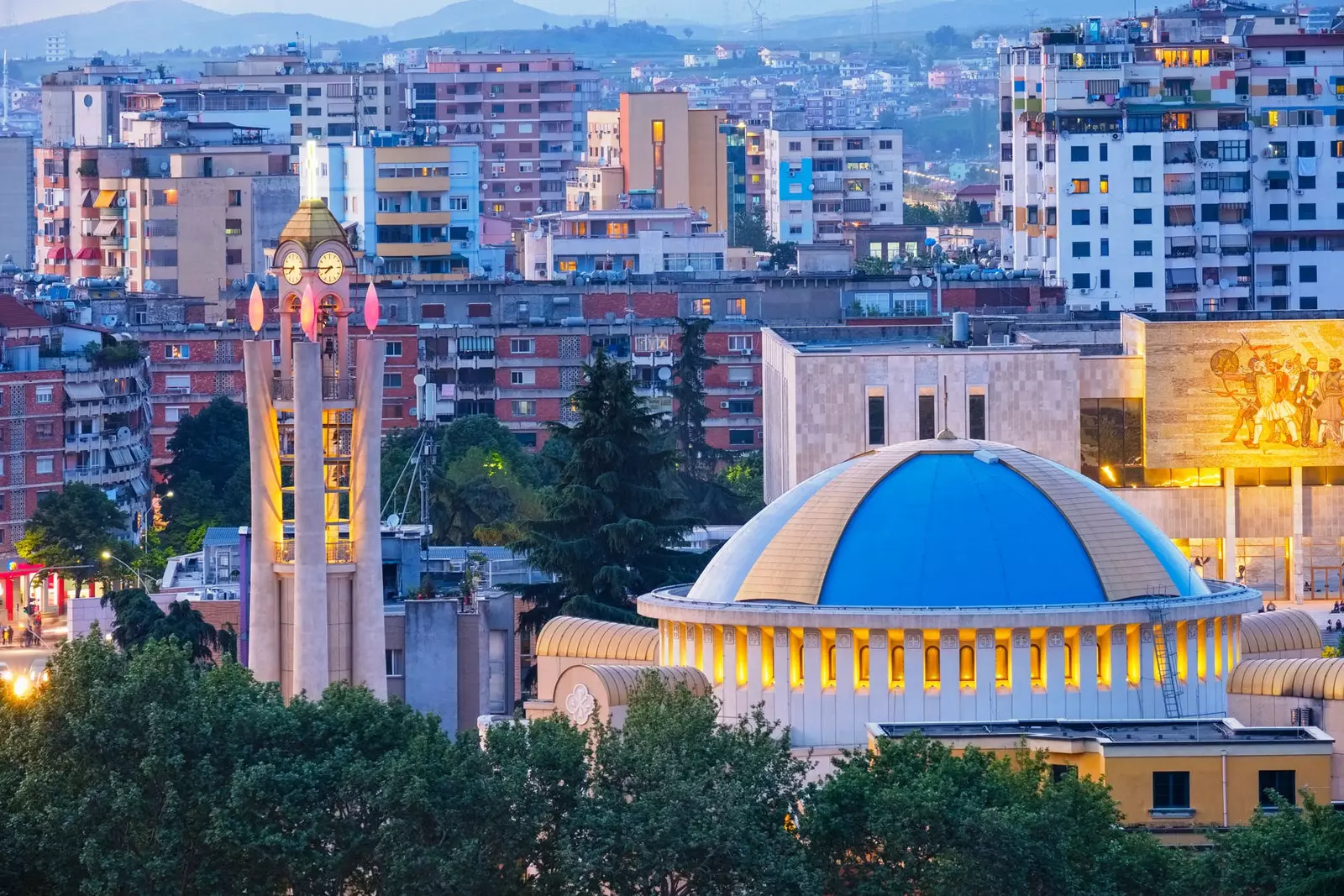
Tirana, one of the most exotic European capitals in Europe
Today we are here to talk to you about one of the most exotic and popular European capitals of recent times. Tirana has resurfaced with force after decades suffering from the paranoid dictatorship of Enver Hoxha, the one that left Albania completely isolated from the world and that, in some way, gives it that mysterious roll, of treasure to be discovered, that today whispers in our ears like a siren's song.
Landing in the capital of this enigmatic country is doing it in a somewhat chaotic city, in which the traffic crowds the roads forming incessant traffic jams of nineties cars, where street markets unfold on the sidewalks and the call to prayer resounds from its few mosques.
Tirana is not pretty, no, but she has an "I don't know what" that catches her. That he surprises and invites you to strip it layer by layer until you discover its true essence. And we are willing to strip her. In 48 hours, no less.
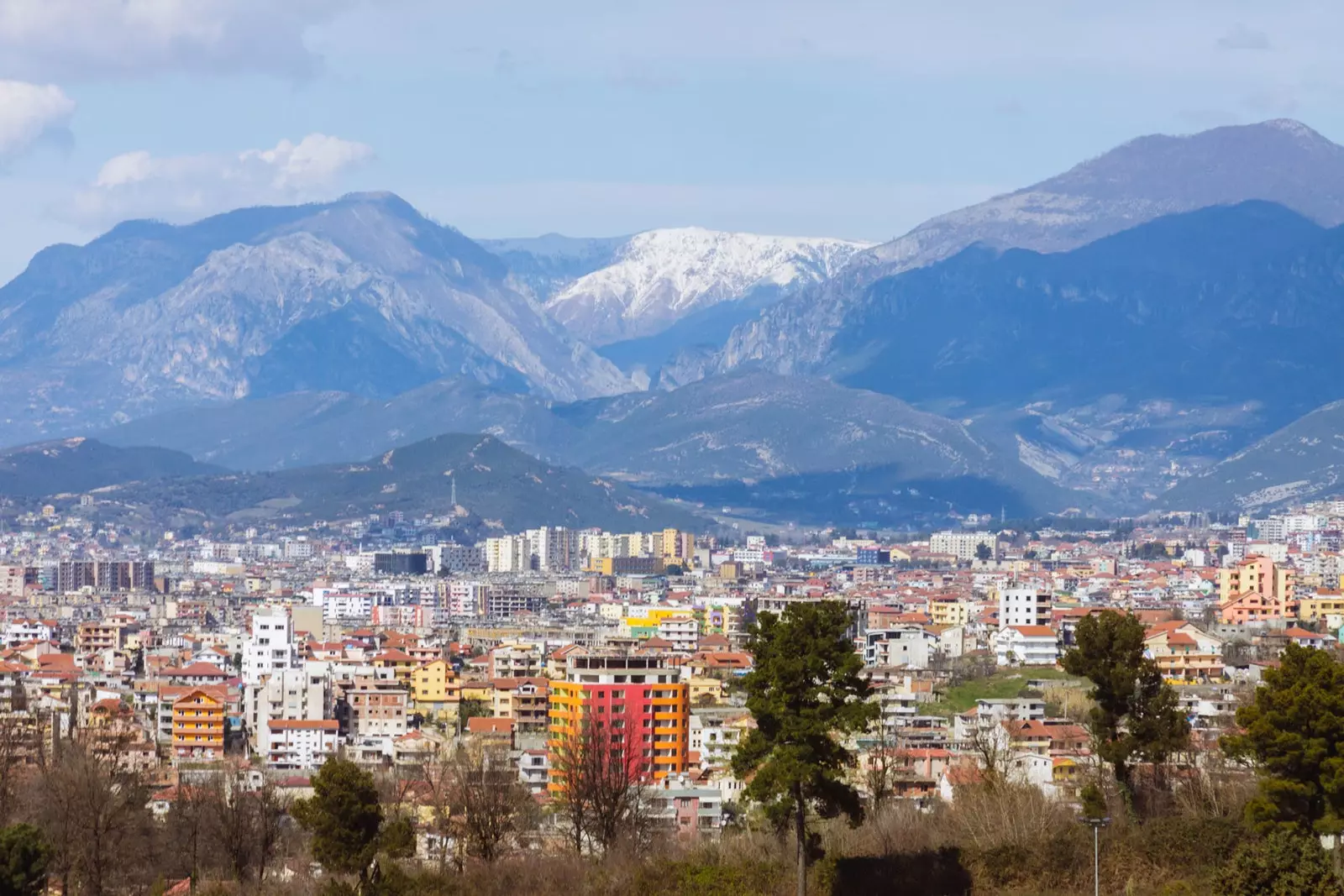
48 hours in Tirana
DAY 1
9:30 a.m. After stocking up on a breakfast of champions worthy of the day of tourism that awaits us, we head to what should be, by obligation, the starting point of any route through the city: Skanderbeg square and its 40,000 square meters await us.
From this immense space, homage is paid to that national hero who stood up to the Ottomans in the fifteenth century and whose equestrian statue dominates everything. But it is also the perfect place to take the pulse of the city: pedestrianized since 2017, if we stop to watch life go by, We will see elderly men strolling relaxed, young people on bicycles on their way to work and the occasional tourist massacring the immense mural that crowns the Museum of National History with photographic shots. Your title? The Albanians.
Of course: few benches to sit on. Not a single tree under whose shade to take shelter on hot days. Here ostentation is conspicuous by its absence.
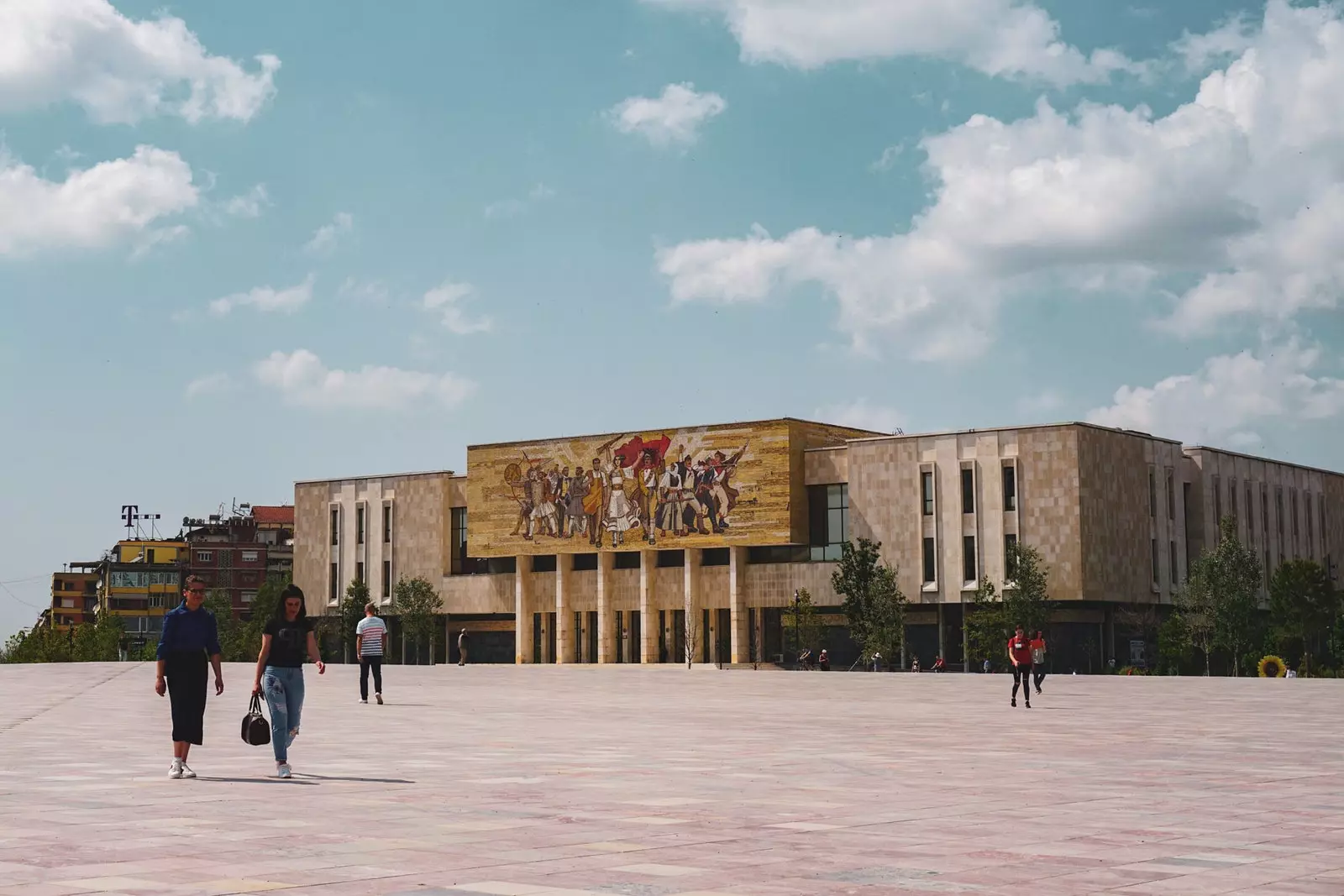
National History Museum
10:00 a.m. As soon as the museum opens its doors, we are there to enter its galleries and learn, in broad strokes, the history of Albania. And we say broadly because the entire visit could take a lifetime, and we would still be missing.
We make a summarized temporary trip that takes us from Prehistory to its Illyrian past; from the conquest by the Ottomans to World War II; from the proclamation of the independence of Albania to, of course, the years of dark dictatorship. An hour and a half in which to contemplate jewels such as the head of Apollo from the 4th century BC. C., and the first mosaic discovered in Albania: The beauty of Durres.
11:30 a.m. back in the square We take a look at the National Bank, the Hotel Tirana Internacional and the Palace of Culture with the Opera at the top: sober and monumental constructions of rationalist style that continue to speak of past times and that contrast with the modern skyscrapers that rise there, in the distance, in the background. In front of us, the historic 18th century Ethem Bey Mosque, one of the oldest buildings in Tirana. Both its exterior frescoes and its interior paintings are an absolute delight.
But the panoramic view of the square is found from the top of the Clock Tower , another of the city's architectural relics, although this means barely climbing the steep and narrow steps to its viewpoint at 35 meters high. The views, calm down, will make up for it.
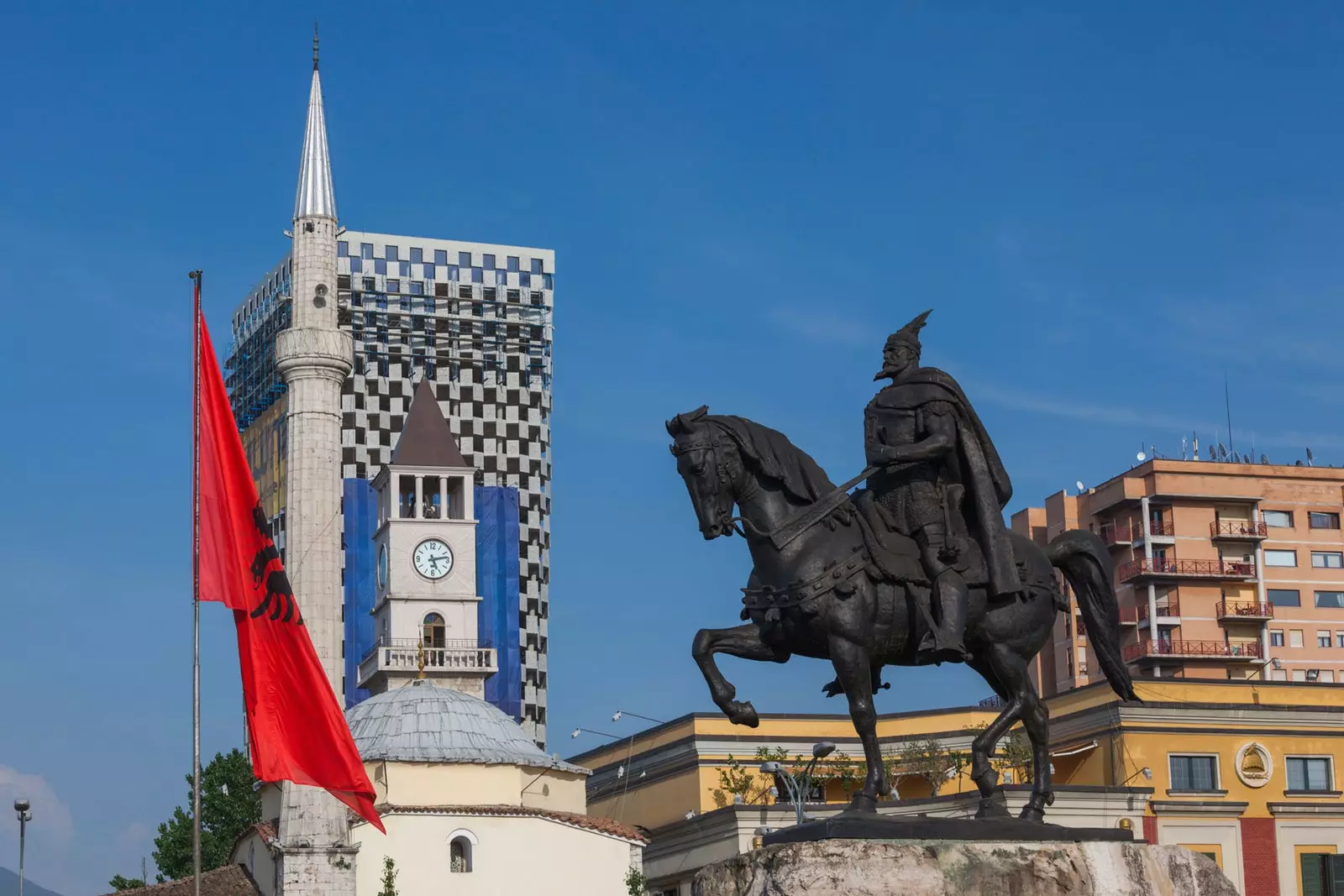
Skanderbeg Square, Ethem Bey Mosque and Skanderbeg Statue
12:00 noon The surroundings of Skanderbeg Square continue to make us dust off old stories: we come across those streets that were —and still are— the Toptani, one of the most important and wealthy noble families in Albania , and with its lavish buildings.
By now we will have realized that Tirana is a city to feel more than to look at. A city that cries out for us to scratch deep into its entrails. And to do it, nothing like visit one of the thousands of bunkers that Hoxha commissioned to be built throughout the country moved by his immense fear of a nuclear attack from his enemies.
Tirana has two that are essential. To visit Bunk'Art 1 you will have to spend several hours, since it is located on the outskirts of the historic center: an entire complex that included offices and bedrooms for government officials, apartments for political leaders and even a canteen: 106 rooms in total. For proximity and practicality, We opted for Bunk'Art 2, next to Skanderbeg Square, which was linked by underground corridors to the Ministry of the Interior, who would have served in the event of an offensive.
Along its corridors, in the subsoil of the city, up to 24 gloomy rooms are hidden, distributed between former interrogation rooms, detainee cells, a decontamination room, a luxurious apartment for the Home Secretary and even some modern art installation. All, yes, provided with information panels and videos with testimonies that not only teach us a lot about the political history of Albania, They also give us goosebumps.
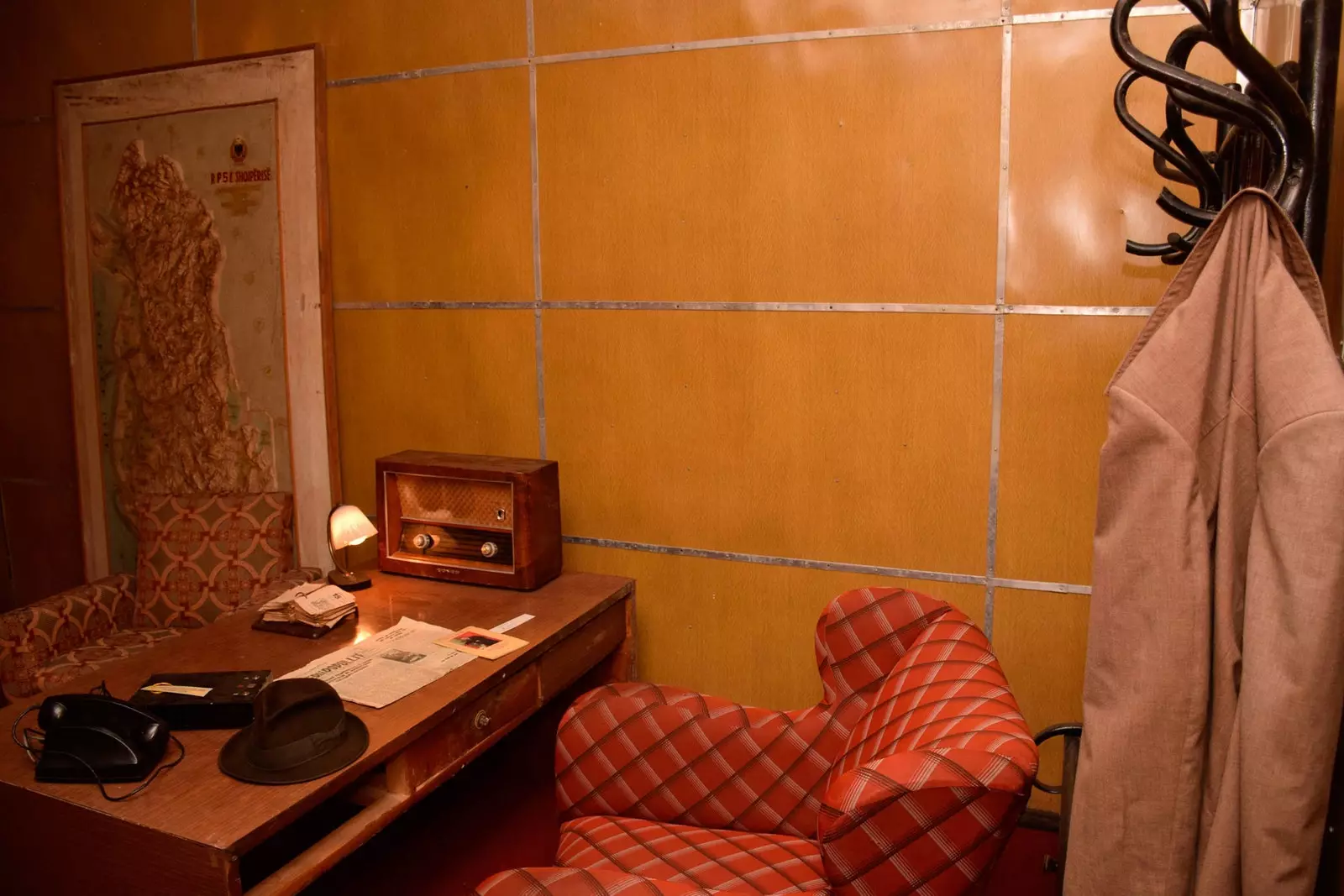
The bunkers are a must visit to understand Tirana
2:00 p.m. When we come to realize the stomach is asking us for gasoline and the mind something lighter. How about we have lunch? We opted for the tree-lined boulevard of Murat Toptani , just a few steps away, where the National Theater**, the Millenium Cinema, the occasional garden and several terraces** also stand.
In this area of the city life flows at a more leisurely pace, car horns are far away. Closer you can hear the chirping of birds, which flutter around the tables waiting to retrieve any crumbs. A peaceful and perfect environment to have the occasional snack before continuing the route.
3:30 p.m. Batteries charged, it's time for art. And it turns out that we just met next to the National Art Gallery , a true monument to cultural heritage and an ideal world apart to go through the history of Albania again, this time from the creativity of its artists.
A whole festival of paintings and works unfolds on its walls with which to discover from examples of the current of socialist realism to very interesting examples of communist propaganda . Paradoxically, it was precisely this time, when the harshest censorship was the one with the greatest artistic growth in the country.
And it is that any deviation from art that promoted the socialist movement was strictly prohibited, in addition to the works were expected to explicitly present an idealized figure of Enver Hoxha. Those who dared to flout the rules were severely punished. The luck for us is that His paintings and sculptures are now exhibited in the museum.
One last note? Cloud, the highly original work of art by Japanese architect Sou Fujimoto that decorates the outdoor garden since 2016, it is one of the most striking and instagrammable corners in all of Tirana. We leave it there...
5:30 p.m. We set out on the road to one of the most decadent icons of the capital, not without first passing through the old Castle of Tirana —the Kalaja Tiranës in Albanian—, owned by the Toptani family —of course—, which decided to remodel it and open it recently so that it could be enjoyed by locals and visitors. Now some remains can be seen scattered around a modern pedestrian leisure area where contemporary cuisine restaurants are mixed —the pastas they prepare at Luga e Argjendtë are spectacular— with original design shops —we die with the ceramics of Seferi—, businesses focused on national delicatessen —like the olive oils produced in Vorë de Subashi— and the most original craft workshops.
6:30 p.m. And now yes: after a short walk that takes us to cross the river Lana, we come face to face with the Pyramid building —La Pirámide—: a real attack on aesthetics perpetrated by Enver Hoxha's own daughter. The construction, which by no means goes unnoticed, was designed to house a museum in honor of her father, although it also served as a conference center and NATO headquarters during the Kosovo war.
Today it is totally abandoned although not controlled: There are not a few who dare to climb its steep walls to the top, with the risk that the adventure entails. Of course, there are those who say that watching the sunset from above is one of the best things to do in Tirana...
7:30 p.m. And finally we reach the trendy neighborhood, Blloku, the neighborhood where much of the communist nomenklatura resided —including Hoxha himself— during the years of dictatorship, was closed to the common mortals during those four decades. When the dictatorship ended and the tyrants were finally able to stroll through its avenues, they found enormous mansions of spectacular beauty that had nothing to do with the communist-style buildings in the rest of the city. **
Today, most of those houses house designer restaurants, cocktail bars, charming cafes and the occasional club. We take a walk through its streets and enjoy both the lively atmosphere and the improvised used book markets that are frequently installed in the parks.
When dinner time arrived, we opted for Salt, on Pjetër Bogdani street, an avant-garde, stylish and refined restaurant , whose design in duplex format makes us fall in love. Specialized in Mediterranean cuisine, seafood and sushi , also has a club area in which the cocktail bar is the boss. Another cheaper and more colorful option —you just have to see its façade to understand it— is Çoko: His proposals unite the traditional and the modern in the same dish.
For a post-dinner drink, Nunu Club has high tables and a terrace area where you can enjoy any of the appetizing cocktails on its menu.
DAY 2
10:00 a.m. After an intense first day, we take a break to linger a bit more between the sheets before going out to continue exploring. And we do it bound for the acquaintance Pazari i Rio or, in other words, to the New Bazaar. Yes, "new", although in reality its origin dates back to 1939.
this space where the mornings are filled with the atmosphere of the souks of the East , and the fruit, fish and meat stalls conquer everything, it was remodeled at the end of 2018 to become a market more in line with those that proliferate in the rest of Europe. That's why, from noon, the shops close but the restaurants open where you can delight yourself with all kinds of delicacies. It also often hosts cultural events such as festivals, concerts and craft fairs.
12:00 noon After a good bath of Albanian essence we go for a walk following a most original itinerary: the one that leads us to discover all those facades that are part of a peculiar project promoted by the former mayor of the city, Edi Rama —Current prime minister of the country, by the way—, with which he intended, since the year 2000, to give a new look to all those gray and lifeless communist apartment buildings scattered around the city. How? Painting its facades with bright colors and figures.
The guide with the marked route is free and you can get it at the Tourist Office next to Skanderbeg Square —there are also itineraries on communist architecture, history, and other topics— and includes a multitude of the most surprising facades scattered around the historic center of Tirana.
Participated in the project national and foreign artists —such as Ann Edholm from Stockholm, Franz Ackermann from Berlin or Tala Madani, from Iran— that continue, even today, expressing their creativity through original drawings and murals in the buildings. Managing to turn Tirana into an authentic open-air art gallery.
2:30 p.m. For lunch we bet on traditional Albanian cuisine at Oda Restaurant , a cozy and humble restaurant located in an old house whose cuisine combines lifelong recipes with other more modern proposals, is our place.
The environment? The most authentic. So much so that At times we come to believe that we are having lunch in the house of a tyrant: low wooden tables, somewhat peculiar decoration and the most careful attention ensure an experience of 10. On the plate, all kinds of proposals with Albanian flavor: **the roast lamb, the spinach cake and the stuffed aubergines are on top. **
4:30 p.m. We will have to walk down the tribute, and what better way to do it on the way to the House of Leaves. This museum, opened in 2017, occupies the old building from the communist era that served as a base for the Sigurimi, the Albanian secret police.
Its rooms show everything imaginable about the espionage procedures and systems that were carried out on both visitors and residents: photographic equipment, recording systems, microphones, videos, interviews... A parallel universe that demonstrates, once again, that sometimes reality is stranger than fiction.
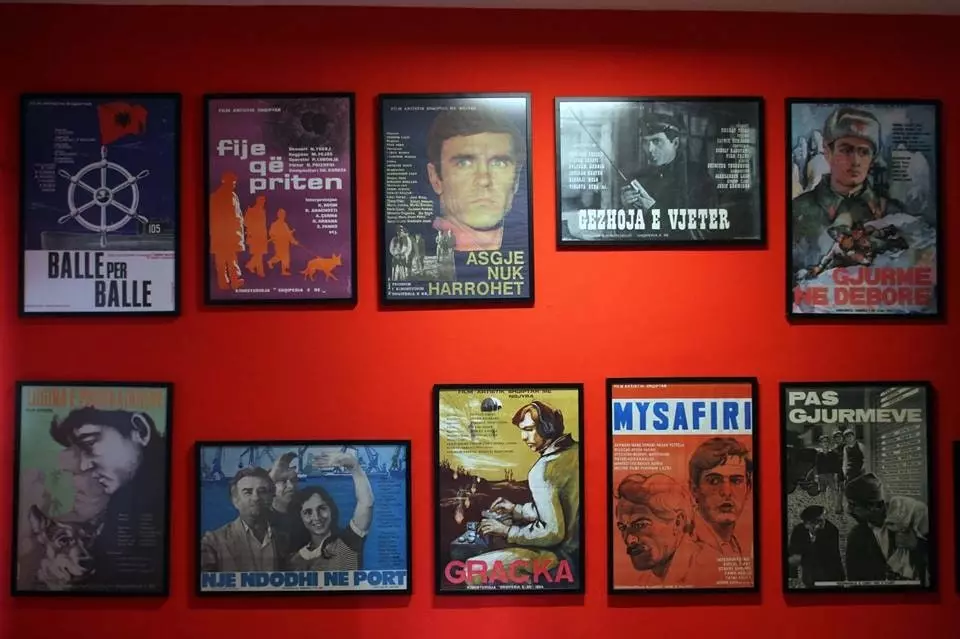
Interior of the House of Leaves
6:30 p.m. The ideal place to say goodbye to Tirana, this city that has shown us so many different faces, is the green lung of the capital: the 289 hectares of the Great Park They are ideal for walking, playing sports, fishing in their artificial lake or resting, lying on the grass, after a busy day.
At this point, If something is clear to us, it is that Tirana is changing by leaps and bounds, striving to make up for lost time but **without giving up their past, essential to understand who they have become today. **
And to find out, better hurry, because when the new winds of Europe finish conquering it, it may be too late.
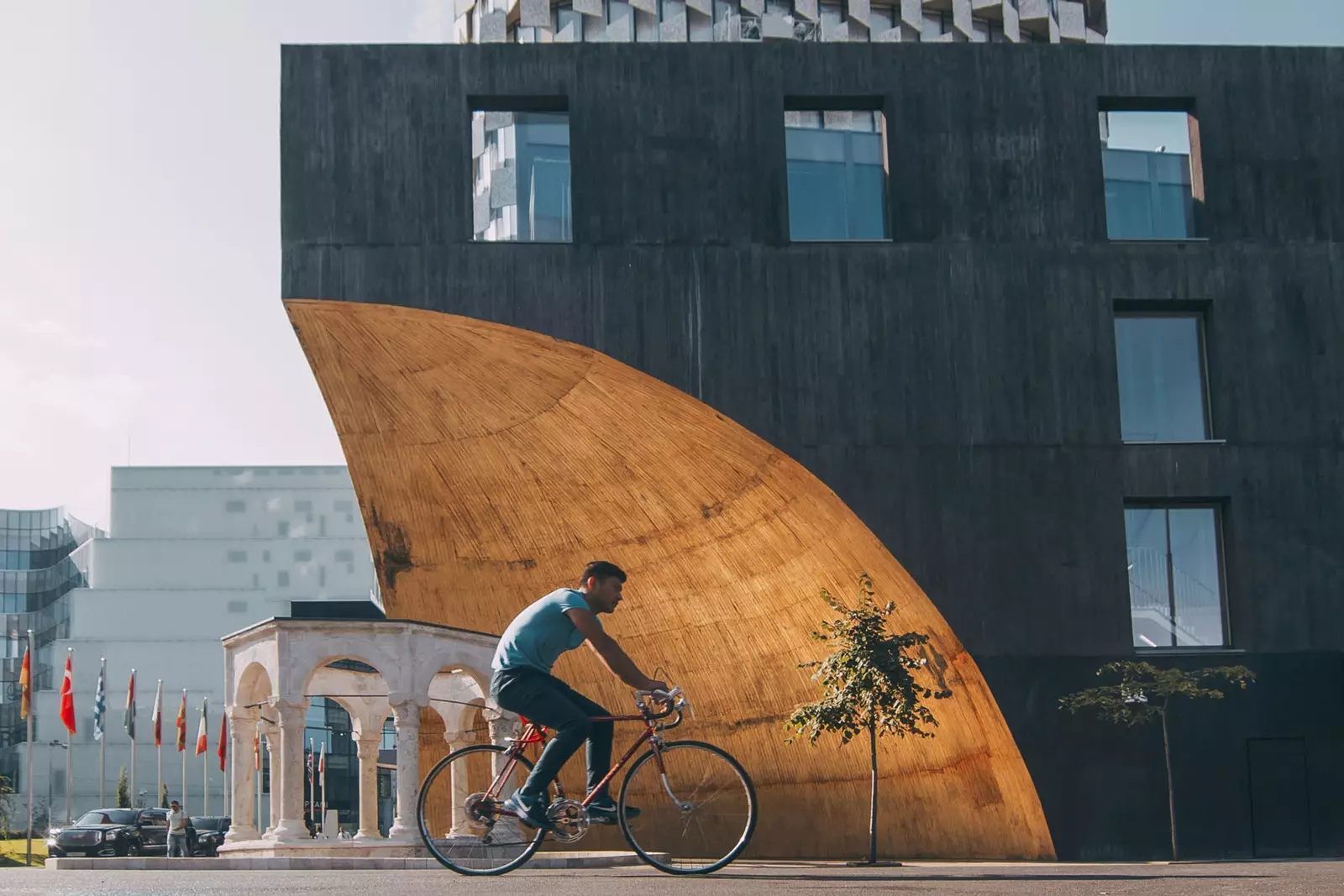
Tirana, the great unknown
